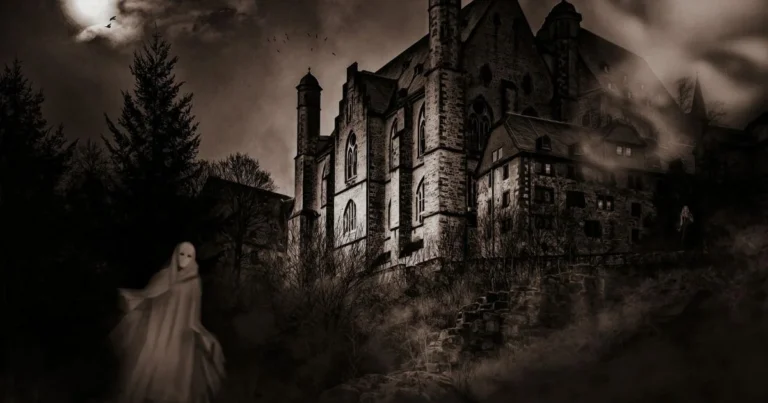The written rebellion: Writing as healing and Resistance
Faraj Bayrakdar, a Syrian poet, endured fourteen years of torture in Aleppo’s prisons. In a lightless cell, he etched verses onto scraps of cigarette paper and pieces of cloth:
“I write so the walls of my cell don’t become the limits of my universe.
Each word is a nail hammered into the coffin of my torturers.”
These words, carved out of suffering, are more than an act of defiance. They are a transmutation. By sculpting his rage into poetry, Faraj ceased to be a prisoner and became a rebel of the soul.
In a world where authoritarian regimes, enforced silence, and buried trauma stifle voices, where isolation, conflict, and daily stress dig invisible trenches in the psyche, we long for refuge. A space where words, fierce and unyielding, defy walls, resurrect the dead, soothe pain, and turn anguish into hope.
In Ways of Escape (1983), Graham Greene described writing as a form of “therapy,” a life-saving escape. Today, neuroscience confirms his intuition: handwriting activates up to 85% of the brain’s regions, compared to just 35% when typing (Stanford, 2022).
Psychologists call it a “cathartic exercise.” Writers speak of it as “alchemy of words.” For the former, it’s a tool to tame inner demons; for the latter, a way to turn mud into gold. Yet both agree: writing is a dual act.
“It’s forcing chaos to sit at the negotiation table,” says psychologist Marie-Claude Delvaux.
“And extracting truths that sound like poems,” adds novelist Kamel Daoud.
A sacred duel. A dance where every written word slightly disarms pain, offering the human brain one of its most noble victories: the power to write horror and survive it.
Writing: The art of taming demons
When emotions overflow, anger, shame, anxiety, they create a toxic fog in the mind. Writing then becomes a silent exorcism. James Pennebaker, a pioneer in expressive writing research, found that spending just twenty minutes a day writing about one’s emotions significantly lowers cortisol, the stress hormone, while improving mental well-being.
Simple, trembling words become incantations against psychic torment. Consider war veterans suffering from PTSD. In a supervised writing protocol, those who chronicled their wartime experiences over several months showed increased hippocampal volume, the brain’s memory hub. This growth correlated with a better response to PTSD treatment.
In short, writing doesn’t merely ease or tame inner storms, it elevates private battles into universal stories. It’s what happens when scars become sentences, and wounds are transformed into works of art.
Writing as balm: From the personal to the universal
Dulling negative emotions is only the first step. Writing must also soothe, like a balm gently poured onto wounds of the soul.
Take the Syrian poet Adonis. In Songs of Mihyar the Damascene, he confronts exile, loss, and inner collapse:
“The word becomes an abyss, and I descend into it to rebuild myself.”
His prose, philosophical and visceral, reflects his era while opening a space for inner reinvention.
Writing, then, is not merely relief. It is metamorphosis. By reorganizing thoughts and memories, individuals turn scars into language, and sometimes, into beauty.
This transformative journey is not reserved for poets. Novelists who have endured psychological adversity have turned to writing to resist and rebuild. Taha Hussein, blind since childhood, found light in words. In The Days, he describes how language guided his steps “like hands in the dark.” Far from being a tale of lament, his autobiography is a vibrant tribute to cognitive resilience. By engaging his auditory and tactile networks, he reconstructed a world through words.
Naguib Mahfouz, Egypt’s Nobel laureate, meanwhile, turned family silences into literary masterpieces. “Writing is about digging up the corpses buried under the soul’s carpet,” he once said. The Cairo Trilogy explores both the hush of a tyrannical father and the upheaval of a nation. For Mahfouz, writing was exorcism, naming ghosts to learn how to live with them.
Every story, every word written, is a heartbeat made visible. Behind each letter lies a neural and psychological symphony, a sanctuary of escape and a path to peace. To write is to give voice to what has remained unspeakable.
When language meets synapse: Neuroscience and the written word
If writers turn pain into beauty, scientists quietly observe what words do deep within the brain. And remarkably, what poets intuit, researchers measure.
Writing is far from a mechanical act. It’s a full-brain experience. This complex coordination enhances memory, sharpens focus, and supports structured thinking. Studies from UCLA reveal that writing activates the hippocampus, essential for memory, and the prefrontal cortex, which governs decision-making and emotional regulation. It also boosts dopamine production, the neurotransmitter linked to pleasure and motivation.
So the brain doesn’t simply record words, it transforms raw emotion into thought, then into narrative. This process calms anxiety, brings order to inner chaos, and fosters self-understanding. Writing, then, is not just a tool for expression, it is an act of lucidity, and ultimately, of liberation.
Psychologist Dan McAdams speaks of the “narrative self”: by writing, we weave a thread of meaning through our experiences. This thread gives coherence to what was once pain or confusion. Writing becomes a form of inner reconciliation, not medical healing, but symbolic care. A return to oneself.
In this light, writing becomes a bridge, between conscious and unconscious, science and art. A quiet flame lighting the brain’s hidden corridors. When words meet synapses, it’s no longer just a search for meaning, but a deeper pursuit: reconciliation with oneself and with the world.
In In Memory of a Long Wound, Palestinian poet Mahmoud Darwish writes:
“I learned the entire dictionary to name my wound,
But the wound was vaster than the words.
So I let the words bleed with me.”
Here, writing is no surrender, it’s a vital outcry. A pact where pain becomes shared language. As Darwish wrote elsewhere, “our words are bricks”, building a collective memory against erasure. Each syllable spilled becomes a map of the unspeakable, not to close the wound, but to chart it as a territory where others may recognize their own scars.
So do not let the unspeakable consume you. Write to be reborn. Transform the lead of memory into the gold of storytelling. Write not as a duty, but as an insurgent act of love, for yourself, for those who will come after, and for life that pulses between the lines.
Because each word is a seed cast into the wind, and the wind, one day, will carry your voice beyond your fears.
“Writing is also not speaking. It’s remaining silent. It’s screaming without sound.”
Marguerite Duras
Now, it’s your turn to let that silent scream be heard.
References
Darwich, M. (1986). En souvenir d’une longue blessure. Paris : Actes Sud.
Greene, G. (1983). Les Chemins de l’évasion (trad. française). Paris : Robert Laffont. (Titre original : Ways of Escape, 1980)
Mahfouz, N. (s.d.). La Trilogie du Caire (trad. française). Paris : Sindbad/Actes Sud. (Œuvre originale en arabe, publiée entre 1956 et 1957)
McAdams, D. P. (2001). The psychology of life stories. Review of General Psychology, 5(2), 100–122.
Pennebaker, J. W. (1997). Writing about emotional experiences as a therapeutic process. Psychological Science, 8(3), 162–166.
Sanbar, E. (2010). Le Palestinien et la poésie. Paris : Actes Sud.
Taha Hussein. (s.d.). Le Livre des Jours (trad. française). Paris : Sindbad/Actes Sud. (Œuvre originale publiée en arabe dans les années 1920–1930)

Ahmed El Bounjaimi
Copywriter-Content Designer
Master’s in Organizational Communication, Hassan II University
Bachelor’s in Philosophy of Communication and Public Spheres, Hassan II University







